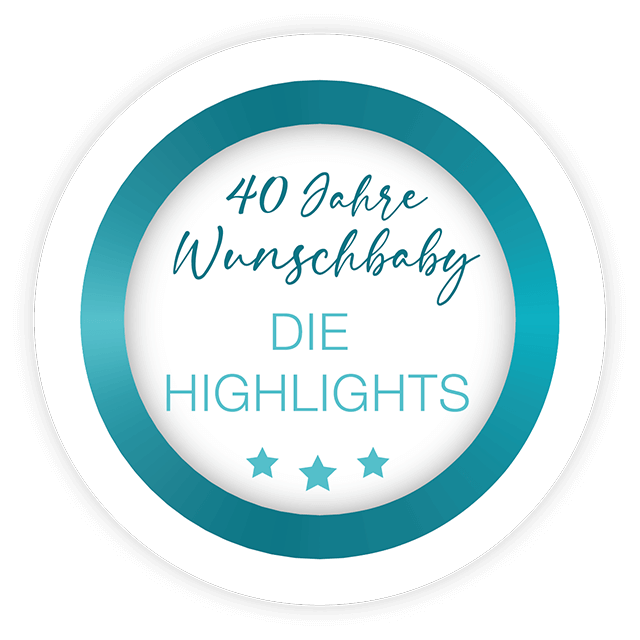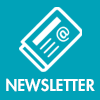Was unsere Patienten sagen
Kinderwunsch & Covid-Impfung
Dr. Nazira Pitsinis, Frauenärztin und Leiterin im Wunschbaby Institut Feichtinger in Baden, erzählt in dieser Podcast-Episode zusammen mit Christian Wallner über eigene Erfahrungen aus der Ordination sowie internationale Studien.Neue Studie gibt Entwarnung: Eizellen COVID-frei
Abgesehen von den allgemeinen Auswirkungen auf die Gesundheit herrscht noch immer Unklarheit ob – und wie COVID von der Mutter oder vom Vater auch auf die Keimzellen und folglich auf den Embryo übertragen wird. „In der täglichen Praxis hatten wir im letzten halben Jahr immer wieder Paare gehabt, welche sich kurz nach bzw. vor Eintritt einer Schwangerschaft mit dem Coronavirus angesteckt haben und in weiterer Folge die Schwangerschaft verloren haben. Zwangsläufig stellt sich dann die Frage ob die COVID Infektion die Ursache für den negativen Schwangerschaftstest oder die Fehlgeburt ist.Mehrere Studien konnten bereits Coronaviren in der Samenflüssigkeit von erkrankten Männern feststellen. Eine soeben erschienene Studie untersuchte, ob Coronaviren auch auf Eizellen von mit Corona infizierten Frauen gefunden werden können. Die spanische Studie untersuchte hierfür 16 Eizellen von zwei SARS-Cov-19 erkrankten Frauen. In keiner der Eizellen konnte das Virus nachgewiesen werden. Somit scheint zumindest eine rund um den Eisprung auftretende mütterliche COVID Infektion sich nicht auf den Embryo zu übertragen. Die soeben publizierten Daten müssen jedoch mit Vorsicht interpretiert werden, da es sich lediglich um zwei Frauen handelte deren Eizellen untersucht wurden. Außerdem könnte sich einer länger andauernde mütterliche COVID Infektion in weiterer Folge auf die Einnistung des Embryos negativ auswirken.1. Barragan M, Guillen JJ, Martin-Palomino N, Rodriguez A, Vassena R. Undetectable viral RNA in oocytes from SARS-CoV-2 positive women. Hum Reprod. 2020Personalisierte IVF: noch individuellere Behandlung möglich durch neuen Gentest am WIF
Die Zukunft der Medizin zeigt in Richtung personalisierte Behandlung. Dabei wird nicht nur eine Erkrankung erkannt und mit einem Medikament, das für den Großteil der Patientinnen wirkt, therapiert, sondern auf den jeweiligen Patienten zugeschnitten eine Behandlung geplant, auf die optimal angesprochen wird. Die Veranlagung wie wir auf Medikamente ansprechen, ob wir auf eine Medikation, z.B. die hormonelle Stimulation im Rahmen der IVF Behandlung besonders stark oder eher schwach reagieren liegt zu einem großen Teil in unseren Genen. Eine persönliche und umfassende Betreuung unserer Kinderwunschpaare steht für uns an vorderster Stelle. Viele Gespräche, eine ausführliche Anamnese und individuelle Aufklärung über verschiedenste Methoden zur Erfüllung Ihres Kinderwunsches gehören bei uns selbstverständlich zu Ihrer Kinderwunschbehandlung dazu.Zur ganzheitlichen Betreuung können wir Ihnen nun zusätzlich auch einen neuen Gentest anbieten, welchen wir in unserer Genetik Abteilung entwickelt haben. Mit dieser Untersuchung können wir umfassend Ihre persönliche genetische Veranlagung für verschiedene Aspekte bei der Erfüllung Ihres Kinderwunsches analysieren, inklusive einer Einschätzung, wie Sie auf die hormonelle Stimulation reagieren werden, ob ein Risiko für eine schlechte Eizellqualität vorliegt oder ob es eine erhöhte Wahrscheinlichkeit für wiederholte Aborte oder Einnistungsversagen gibt. Ebenso können mögliche genetische Ursachen eines verfrühten Absinken der Eierstockreserve und damit verbundene Kinderlosigkeit ausgetestet werden. Mit diesen hochmodernen DNA Analysen können wir am Wunschbaby Institut Feichtinger Ihre geplante Behandlung ganz persönlich auf Sie anpassen, unangenehmen Komplikationen und wiederholten Fehlversuchen vorbeugen oder über andere Methoden zur Erfüllung Ihres aktuellen oder zukünftigen Kinderwunsches aufklären. Somit kann jedem Paar schneller, effektiver und schonender zu ihrem Wunschbaby verholfen werden.Myome und Kinderwunsch – Was Sie wissen sollten
Myome sind Tumoren, die aus Muskel- oder Bindegewebe bestehen und in verschiedenen Größen und Formen vorkommen können. Sie entstehen oft in der Gebärmutterwand und können sowohl asymptomatisch als auch mit Beschwerden wie starken Monatsblutungen, Schmerzen oder einem Druckgefühl einhergehen.Es gibt verschiedene Arten von Myomen:
- Submuköse Myome: Diese befinden sich unter der Gebärmutterschleimhaut und können die Gebärmutterhöhle verformen.
- Intramurale Myome: Diese sind in der Muskelschicht der Gebärmutter eingebettet und können das Wachstum der Gebärmutter beeinflussen.
- Subseröse Myome: Diese wachsen an der Außenseite der Gebärmutter.
1. Veränderungen der Gebärmutterform: Submuköse und intramurale Myome können die Form und Struktur der Gebärmutter verändern, was es erschwert, dass sich ein befruchtetes Ei einnistet.
2. Beeinträchtigung der Eileiter: Besonders bei Myomen, die sich in der Nähe der Eileiter befinden, kann es zu Blockaden kommen, die den Transport der Eizelle zur Gebärmutter verhindern.
3. Durchblutungsstörungen: Einige Myome können die Durchblutung des Gebärmuttergewebes beeinträchtigen, was die Chancen auf eine erfolgreiche Einnistung des Embryos verringern kann.
Die Diagnose von Myomen erfolgt in der Regel durch eine gynäkologische Untersuchung und eine Ultraschalluntersuchung. In manchen Fällen sind weiterführende Verfahren wie eine Magnetresonanztomographie (MRT) notwendig, um die genaue Größe und Lage der Myome zu bestimmen.
Nicht jede Frau mit Myomen hat Fertilitätsprobleme, aber wenn der Kinderwunsch ausbleibt, kann eine Behandlung der Myome in Erwägung gezogen werden. Es gibt verschiedene Therapieoptionen:
1. Medikamentöse Behandlung: In einigen Fällen können Medikamente eingesetzt werden, die das Wachstum der Myome hemmen oder die Symptome lindern, wie z. B. Hormonpräparate. Diese Methode kann jedoch nur vorübergehende Linderung verschaffen und ist nicht immer eine Lösung für die Fruchtbarkeit.
2. Chirurgische Behandlung: Wenn die Myome die Fruchtbarkeit beeinträchtigen, kann eine Operation notwendig werden. Die Entfernung von Myomen (Myomektomie) kann durch verschiedene Verfahren erfolgen:
- Laparoskopische Myomresektion: Diese minimal-invasive Methode eignet sich für kleinere Myome und ermöglicht eine schnelle Genesung.
- Hysteroskopische Myomektomie: Hierbei wird das Myom direkt über die Gebärmutterhöhle entfernt, was bei submukösen Myomen der Fall ist.
3. Uterusentfernung (Hysterektomie): In sehr seltenen und schweren Fällen, bei denen die Fruchtbarkeit bereits nicht mehr im Fokus steht, kann auch eine vollständige Entfernung der Gebärmutter in Erwägung gezogen werden.
4. Fokussierte Ultraschalltherapie (FUS): Diese relativ neue Methode verwendet hochintensiven Ultraschall, um Myome zu behandeln, ohne eine chirurgische Intervention vorzunehmen. Die Methode eignet sich vor allem für Frauen, die ihre Gebärmutter behalten möchten.
Nicht alle Myome müssen behandelt werden. Wenn die Myome keine Symptome verursachen und keine Fruchtbarkeitsprobleme auftreten, kann der Arzt zunächst einen abwartenden Ansatz empfehlen. Wenn jedoch Kinderwunsch besteht und Myome als Ursache für Schwierigkeiten bei der Empfängnis identifiziert werden, ist eine Behandlung sinnvoll. Die Entscheidung, ob eine Behandlung notwendig ist, sollte in Absprache mit einem erfahrenen Gynäkologen oder Fertilitätsspezialisten getroffen werden.
Myome können die Fruchtbarkeit einer Frau beeinflussen, aber sie sind nicht zwingend ein Hindernis für den Kinderwunsch. Viele Frauen können auch mit Myomen schwanger werden, und verschiedene Behandlungsmöglichkeiten bieten eine Chance, die Fruchtbarkeit zu erhalten oder wiederherzustellen. Wichtig ist, dass Frauen mit Kinderwunsch, die an Myomen leiden, sich frühzeitig beraten lassen und gemeinsam mit ihrem Arzt die beste Vorgehensweise für ihre individuelle Situation festlegen.
An das Team des Wunschbabyzentrums!
Wir sind überglücklich über unseren Sohn. Danke für die Betreuung am weg zu unserem Wunschkind im Frühjahr! H. und M.Lesen Sie mehr

IVF - In Vitro Fertilization (assisted reproduction)
What do IVF and ICSI mean?
In the IVF method, around 100,000 sperm are introduced to each egg cell. The best, most vital sperm naturally makes its own way into the oocyte.
Indications:
IVF is the preferred conventional method for assisted reproduction in patients with endometriosis, PCOS, or obstructed fallopian tubes AND the male partner has a normal sperm analysis.
Success rates
The chance of successfully becoming pregnant with the assistance of IVF is about 30-40% per cycle, dependent on the age of the individual partners, hormonal balances, the presence of underlying diseases (diabetes, high blood pressure, etc.) and lifestyle factors (being overweight, stress, nicotine and excessive alcohol consumption, etc.).
How IVF works
The seven steps of IVF-treatment:
- Hormonal stimulation of the ovaries
- Follicular puncture
- Collection of semen
- Fertilization through IVF
- Embryo transfer
- Assisted laser hatching
- Nidation phase
1. Hormonal stimulation of the ovaries
Treatment with IVF (in-vitro fertilization) or ICSI (intracytoplasmic sperm injection) nearly always (with very few exceptions) takes place after hormonal stimulation of the ovaries. The goal of hormonal therapy is to increase the number of maturing follicles in both ovaries to obtain several fertile eggs.
A preparatory phase (“down-regulation”) is intended to prepare the body for the actual stimulation by suppressing the body's own hormone production or release. This so-called "down-regulation" can take place either by applying daily injections under the skin (subcutaneous) or through oral intake of certain medications. The advantage of the preparatory phase is that controlling the stimulation phase becomes far easier.
FSH (follicle-stimulating hormone) and LH (luteinizing hormone) are used in their pure hormonal form or combined for the subsequent stimulation of the ovaries. Throughout the hormonal treatment, a specific dose (dependent on weight, age, etc.) is administered daily at the same time every day through subcutaneous injections.
The use of these medications and how they are applied will be explained in detail when starting treatment. The injection of these medications will be demonstrated so that patients and/or their partners can inject themselves daily, so that daily visits to the doctor are not necessary.
The number of follicles, the course of their growth, and the development of the uterine lining will be closely observed per ultrasound. Once the follicles reach a certain size, ovulation will be triggered using the hormone hCG (human chorionic gonadotropin). This technique helps determine the optimal time for egg cell retrieval—namely, shortly before ovulation.
2. Follicular puncture
The egg cells are removed through transvaginal extraction (through the vagina) under ultrasound guidance 36 hours after the application of the “ovulation stimulating shot”. A needle is first used to focus the follicles under ultrasound guidance, and then to puncture and collect the follicular fluid containing the egg cells (oocytes). Afterward, the egg cells are separated from the follicular fluid under microscopic view and transferred to a special culture medium and placed in an incubator at 37°C.
On average, the follicular puncture only lasts 5-15 minutes, depending on the number of follicles. In order to make the procedure more comfortable, our patients receive a combination of sleep and pain medication. The follicular puncture is performed on an outpatient basis, and a post-procedural 1-2-hour observational period in our relaxation rooms is necessary afterward.
3. The semen collection
The semen is obtained on the day of the follicular puncture through masturbation after 2-3 days of abstinence (no ejaculation). This is sometimes difficult, especially when “ordered” to do so, or due to stress/time pressure. Therefore, in seldom circumstances, it is also possible to bring the semen sample from home. It should be noted, however, that the period between semen collection and delivery of the sample to the institute cannot exceed two hours.
4. Fertilization: conventional IVF method
The fertilization of the extracted egg cells happens on the same day as they were retrieved. The sperm and the egg cells are brought together in a small bowl using a special preparation technique, which allows the fertilization process to take place in a "natural" way. The next day, a microscopic examination is performed to see how many of the egg cells show signs of fertilization (for example, if two pronuclei and two polar bodies are formed).

5. The embryo transfer
2-5 days after fertilization, the embryo is brought into the uterus using a thin, flexible plastic tube (catheter) under ultrasound guidance. Which day the embryo transfer will take place on is dependent on the number of fertilized eggs. If 1-4 egg cells are successfully fertilized, then they are usually transferred to the uterus 2-3 days after the follicular puncture. During the 2-3 days, the embryos are assessed daily regarding their development (cell division) and other specific requirements, such as cell division rates and consistency of cell division. The embryos with the best quality are selected for transfer.
If there are five or more embryos, then the transfer is performed five days after fertilization, which is referred to as a blastocyst transfer. A blastocyst is the furthest stage of development that can take place outside of the human body. If more than five embryos of top-quality are available for transfer, then these can be frozen.
The transfer of the embryos into the uterus only lasts a few minutes and is usually painless. We advise our patients to relax in our relaxation rooms for 20-30 minutes afterward.
6. Assisted Laser Hatching (ALH)
The egg cell and the embryo are surrounded by a solid shell, the so-called zona pellucida. When the embryo reaches the blastocyst stage, it must hatch out of this shell in order to implant itself in the uterus. Sometimes, however, this sheath is "hardened" or thicker than average, which makes implantation more difficult or even impossible. When this happens, the incision of the zona pellucida using a laser makes it easier/possible for the growing embryo to "hatch" and thus implant itself into the uterine lining.
7. Nidation phase (Implantation phase, Luteal Phase)
With the follicular puncture begins the second half of the menstrual cycle, the so-called luteal phase. Throughout this phase, the hormones produced by the corpus luteum are supported using medication, to ensure that the endometrium is optimally prepared for the implantation of the embryo. The medication used in the luteal phase can be applied as intramuscular depot injections, taken orally, or through vaginal suppositories.
The earliest that a pregnancy can be determined is two weeks after fertilization of the oocytes through the detection of the pregnancy hormone hCG in the blood or urine. If the pregnancy test results are positive, support of the luteal phase is continued until the 12th week of pregnancy.
- Overview
- IVF
- IVF in 10 steps
- Cause of miscarriages
- Assisted-Hatching
- Chipsi
- Application of Seminal Plasma
- Egg cell donation
- Genetics
- Testicular puncture
- Insemination
- ICSI
- Fertility treatment in same-sex couples
- The dream to have children despite cancer
- Complementary Medicine
- Cryopreservation
- Male Infertility
- PICSI
- Psychotherapeutic support
- Sperm and egg cell donations
- Social Freezing



































